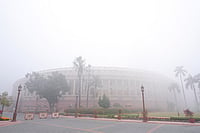Last year, the river Sutlej had the lowest ever discharge of 7.123 MAF (million acre feet). Consequently, from an average generation of 11,000 MW per annum, Bhakra's output last year was the lowest at 8,596 MW. Since 1993-94, the frequency of annual discharges going down below 10 MAF on the Sutlej, is increasing. The Punjab government created a storm last year when it annulled a water-sharing agreement between Punjab, Haryana and Rajasthan, using figures of reduced discharges on the Ravi and Beas to do so.
The Uttaranchal Jal Vidyut Nigam (UJVN) operates a number of hydel projects on the Yamuna and Ganga rivers systems. Says chairman and managing director Avadh B. Giri, "It's high time we looked at shrinking glaciers as a water resources problem and not merely an environment issue. There has been a significant long-term reduction in the discharges of Uttaranchal rivers and we need to take drastic steps to remedy this." A chain of small power houses on the Yamuna meant to generate about 550 mw power are operating at one-third the capacity in non-monsoon months due to less flows. Authorities are now planning to increase the Yamuna flows on these power houses by building a storage dam on the Tons river (a tributary of the Yamuna) so that stored water from the Tons can augment the Yamuna channel.
Even the Ganga, which is in a more comfortable position than the other Uttaranchal rivers (it is fed by more than 250 glaciers) registers extremely low discharge of about 5,000 cusecs at Rishikesh in the lean season. And though its monsoon flow varies between 3 lakh to 4 lakh cusecs, this is down from the monsoon highs of around 5 lakh to six lakh cusecs in the '70s.
In the Uttaranchal hills, several small spring-fed rivers like the Kosi, Gaggal, Western Ram Ganga and Gaula are fast drying up. A recent study by the Kumaon University noted that discharge in the Kosi has gone down from 790 l/sec in 1992 to 196 l/sec in 2004. An Uttaranchal Jal Sansthan survey on mountain springs used for rural water supply schemes, found that in 805 out of 4,719 springs surveyed, the water had reduced by more than 50 per cent.


























